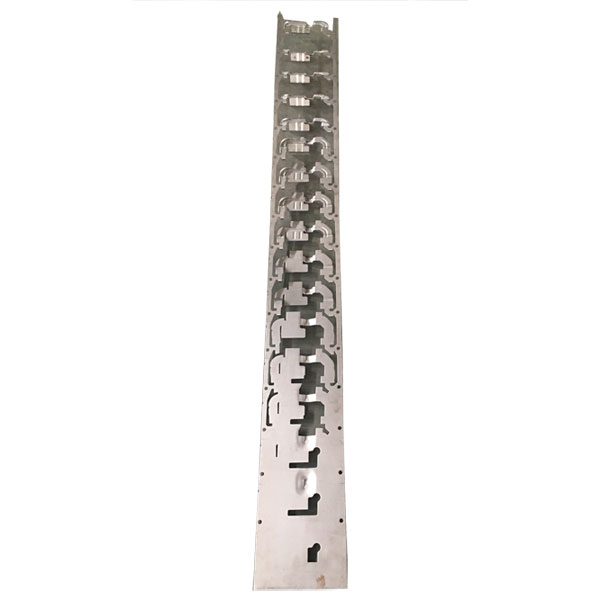Understanding the Fundamentals of Metal Stamping
2024-01-02
Metal stamping is a manufacturing process used to convert flat metal sheets or coils into specific shapes using specialized tooling and machinery. It's a versatile technique employed in various industries to produce a wide range of metal components and parts. Here are the fundamental aspects of metal stamping:

1. Blanking and Piercing: Blanking involves cutting out a flat shape from a metal sheet, creating the basic outline of the part. Piercing is the process of creating holes or openings within the metal sheet, which can be done simultaneously with blanking or as a separate operation.
2. Forming: Forming shapes the metal into the desired configuration. This can include bending, embossing, coining, or drawing the metal sheet to create complex geometries, contours, or specific features.
3. Tooling and Dies: Tooling consists of dies, punches, and other components used in the stamping process. Dies are specialized tools that shape and cut the metal, while punches apply force to form the desired shape. They're typically made from hardened steel and are designed to withstand high-pressure and repetitive use.
4. Presses: Stamping presses provide the force necessary to form the metal. They range from mechanical presses to hydraulic or pneumatic presses, each suited for different types of stamping operations and volumes. The press applies force to the dies, allowing for precise shaping and cutting of the metal.
5. Material Selection: Metal stamping can be performed on various metals, including steel, aluminum, copper, brass, and alloys. The choice of material depends on factors such as strength, durability, corrosion resistance, and the intended application of the finished part.
6. Progressive Stamping: This technique involves a series of sequential operations performed in a single press. The metal strip passes through multiple stations, each performing a specific task—such as cutting, bending, and shaping—resulting in a finished part after the final stage.
7. Quality Control: Quality checks and inspections are crucial throughout the stamping process to ensure dimensional accuracy, consistency, and adherence to specified tolerances. This involves visual inspections, measurements, and testing of the finished parts.
Metal stamping offers several advantages, including high production speeds, cost-effectiveness for large volumes, precise and consistent part production, and the ability to create complex shapes with minimal material waste. It's widely used in industries like automotive, aerospace, electronics, appliance manufacturing, and more for producing a diverse range of components used in various products and machinery.


